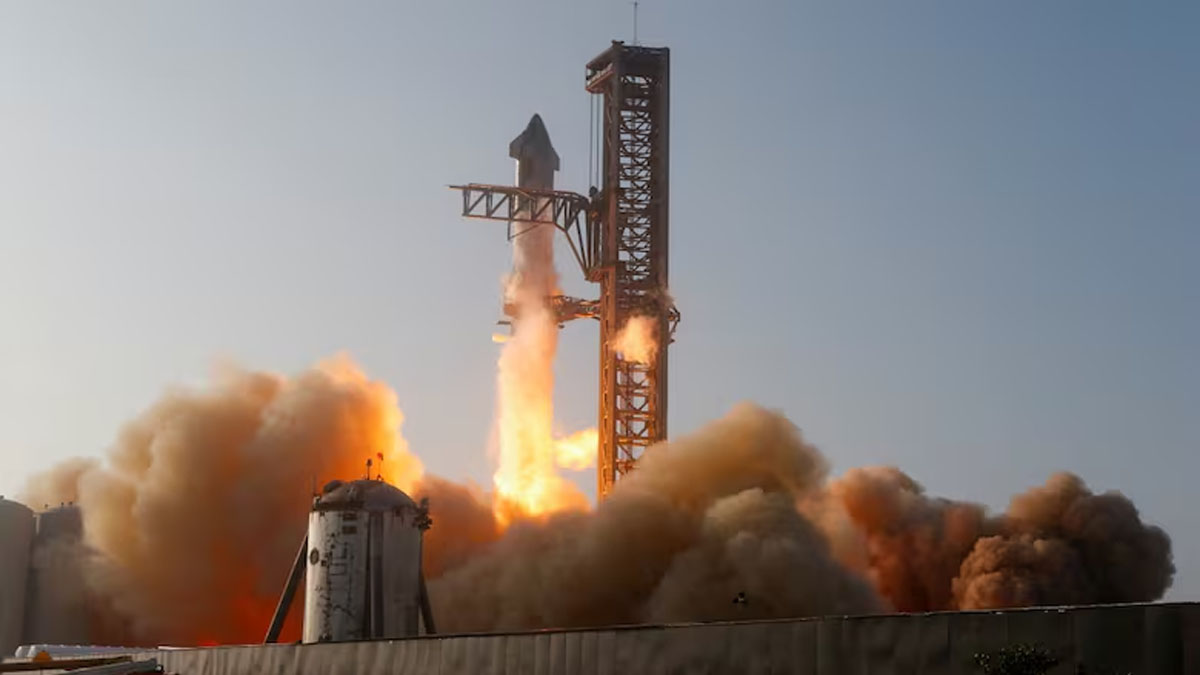
SpaceX's highly anticipated ninth test flight of the Starship rocket on May 27, 2025, ended in a catastrophic and fiery disaster that left viewers stunned. What was meant to be a monumental step toward Elon Musk’s Mars vision spiraled into chaos when the spacecraft, after successfully launching from Starbase in Texas, fell apart during its re-entry into Earth’s atmosphere.
The Starship rocket, standing 400 feet tall, had initially soared through the night sky, carrying hopes of deploying Starlink satellite simulators and completing a major milestone for SpaceX. But shortly after reaching space, disaster struck. A technical glitch prevented the payload door from opening, rendering the satellite deployment mission a failure. Yet, the most harrowing part of the flight came when the spacecraft lost control during re-entry.
As Starship plummeted back toward Earth, viewers watched in horror as the rocket tumbled uncontrollably, spiraling through the thick atmosphere at high speeds. The heat generated during re-entry was enough to disintegrate the spacecraft, sending debris burning into the Indian Ocean. For SpaceX, this was more than just a malfunction—it was a gut-wrenching display of the brutal reality of space exploration.
“Seeing that ship in space today was a hell of a moment for us,” said SpaceX spokesperson Dan Huot, trying to mask the disappointment with a hopeful tone. But the truth was undeniable—the dream of a reusable rocket capable of ferrying humans to Mars was far from reality. Instead, the world watched as a $3 billion experiment crumbled in flames.
The public outcry was swift and loud. Nearly 1 million people tuned in to watch the rocket’s fiery demise, and the explosion that followed created a wave of space debris over the Atlantic Ocean, grounding flights at several Florida airports. The debris—fueled by broken engines, shattered heat shields, and burning fuel—became a grim symbol of Musk's ambitions colliding with the raw dangers of space.
This incident brought SpaceX’s track record into stark focus. The last two test flights had ended in explosions just moments after takeoff, showering the Atlantic with flaming wreckage and sparking fears over the safety of the company’s future missions. Critics were quick to point out the repeated failures, calling into question Musk’s promise to make life interplanetary.
"SpaceX is trying to do something that’s almost impossible,” Huot explained, but that didn’t stop the controversy from bubbling over. Musk's plan to send humans to Mars next year now seems increasingly reckless to some, particularly after SpaceX’s latest failure.
While some are still in awe of Musk’s ambitions, others are beginning to ask: How much longer can SpaceX afford to fail before the dream of Mars becomes nothing more than a deadly gamble?

















